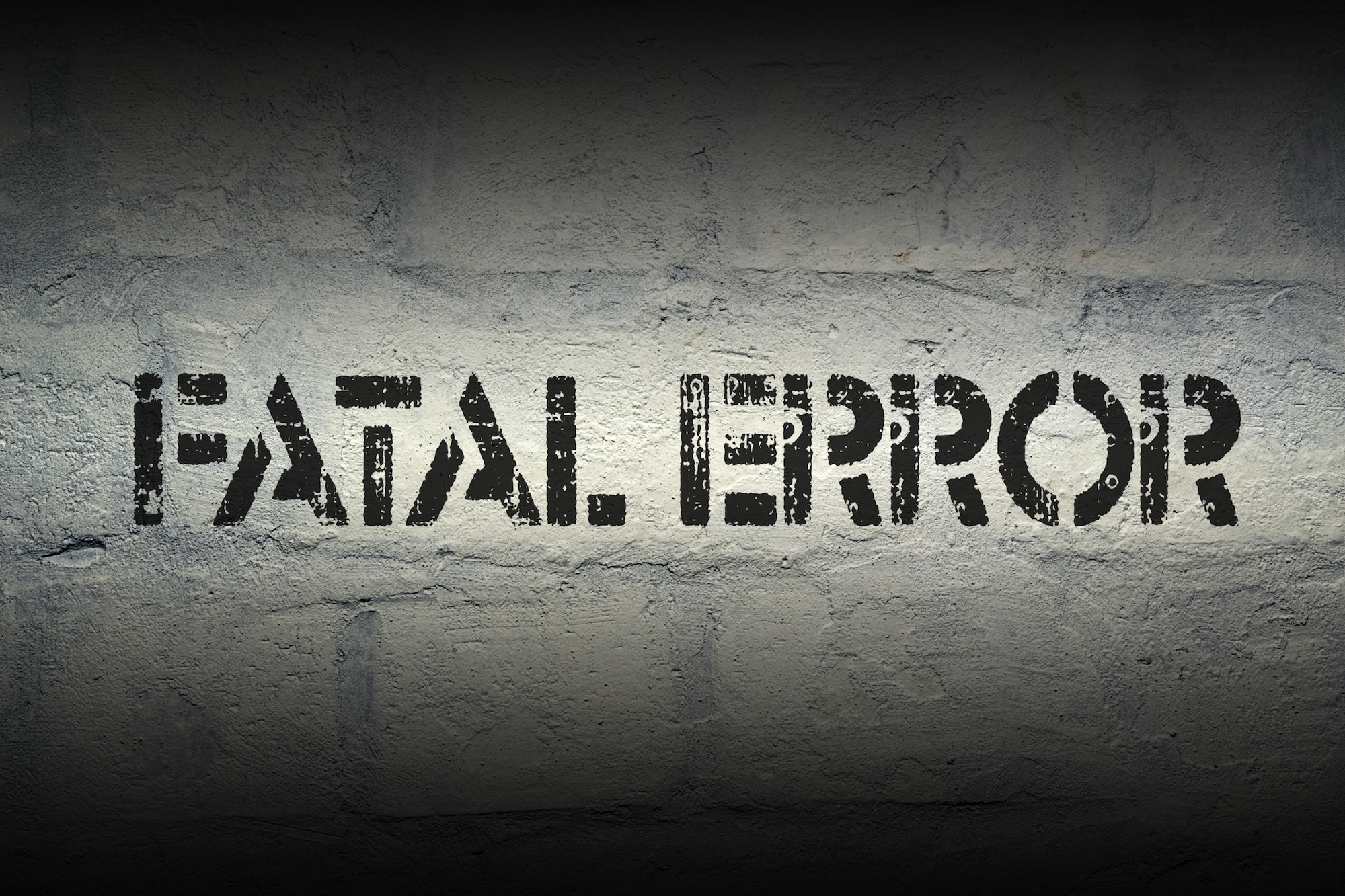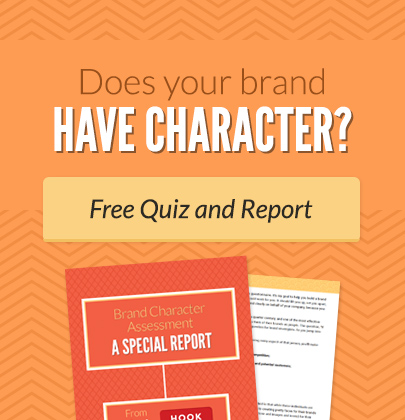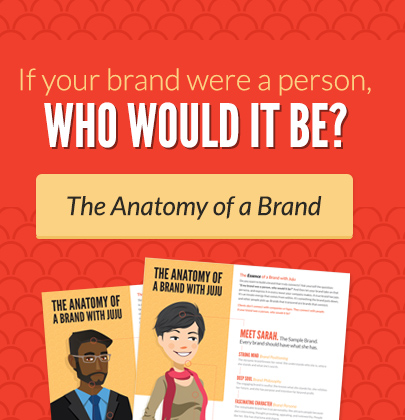Every day on social media – and in reader comments on my blog and in my email inbox – I interact with entrepreneurs who are building their businesses. And I see comments like this:
“I just finished my branding. What do you think of the colors?” or
“I’m trying to decide between three logos, which one resonates with you?” or
“I’m re-branding my website for the fourth time in two years.”
Are you saying these things? Is your brand about logos, colors and fonts? Are you asking for general opinions about visual direction for your brand? Are you “re-branding” again and again to keep things fresh?
Are you BEGINNING the branding process with the visual aspects of the brand?
If you said yes, please stop.
Because you are not helping your business. And you may likely be damaging it.
A brand is not about logos, colors and fonts (although a branding system INCLUDES consistent logos, colors and fonts). A brand is about the way you make people feel.
A brand is about creating a connection between you and a potential buyer in your target market. (The “in your target market” may be the most important part of that statement.)
A brand is about communicating values and ideals, so that potential customers with similar values and ideas can relate.
People don’t connect with logos, color and fonts. They connect with values and ideals. They connect with shared visions, shared dreams, shared purposes, shared positions. People connect with brands that reflect themselves, or indicate who they want to be.
So where do logos, colors and fonts fall into the branding process?
Very late in the strategy game, my friend. Logos, colors and fonts do not come first.
The visual interpretation of your brand – how it looks and lives on the page – comes long after you’ve established WHY it should look that way.
In order to brand properly, you need a strategy.
I’m going to say something here that could be controversial, and it could make some of my followers angry. But it’s the truth, and it must be said:
A brand does NOT come from a graphic designer.
A brand comes from the heart and soul of your company.
A graphic designer cannot “brand” you. Or “make a brand” for you.
In order for you to maximize a relationship with a designer – in order for the designer to be truly able to apply his or her talent, experience, and artistic shizzle, you need to know what the hell you want. And you cannot know that – not possibly – unless you spend some time establishing a brand strategy.
And so, I repeat:
A brand does NOT come from a graphic designer.
A brand comes from inside your business. A brand develops out of a very sound and very deliberate strategy. And a graphic designer translates that strategy into something visual.
If you start with the graphics, you’re starting at the end.
It’s like icing the cake before you cook it. Those decorations are sliding around on a very unstable foundation.
So, what does a brand strategy include? What do you need to bake into the cake BEFORE you ice it?
POSITION. Your brand position is a promise you make to your customers. What do you bring to the world? And how will it make their lives better?
TARGET MARKET. This may be called an avatar, an archetype, or any number of other names. But prior to branding, it’s critical that you understand whom you’re serving. Because you can’t be all things to all people. And you don’t want to “take a shot” at this. This is worth some research. I promise you.
PRICE/QUALITY STRATEGY. Identifying your brand position means understanding where your company sits within the market in which you compete. It includes the quality of the services you provide and the price you charge for them IN COMPARISON WITH THE COMPETITION. That means you must know the competition. Are you Walmart? Target? Nordstrom? Amazon?
DIFFERENTIATION. I call this the Juju. You brand differentiator is the thing that sets you apart from EVERY other brand in the market. It’s your secret sauce, your proprietary approach, your talent, your expert position… It’s the thing that makes you DIFFERENT than every other company. And it’s critical that you know this. The juju helps you answer the Million Dollar Brand Question: Why would someone buy from my business, out of all the businesses in the world?
BRAND VALUES. This may seem woo-woo and superfluous to a lot of people. But I assure you, it’s not. Values are the exact point where your potential customers intersect with your brand in a meaningful way. What does your brand stand for? What is it ABOUT? Why are you here? What do you believe in? Your brand position is about “what” you offer. Your brand values are about “how” you offer that. (If I sell make-up, and my primary values are fashion, a commitment to current trends, and being “on the edge,” then I have a very different approach – and I attract a very different target market – than a make-up company whose values are sustainability, natural ingredients and the health of my customer’s skin.)
BRAND STORY. If you want people to tell your story (meaning you want word-of-mouth referrals and testimonials, or you want funding or loans or business partners), then you need to get your story straight. If you want people to hit your website and convert to buyers, then you need to get your story straight. A great brand story includes a name and a tagline, and an absolutely consistent presentation of the benefits of your product, how it works, how people buy it, and your backstory (which includes WHY you’re in business to begin with). If you tell your story a different way every time, no one will remember it, let alone repeat it. And if it’s presented in a way that’s even mildly confusing, folks will back right out of your home page, and go to another page, where they can find clarity.
BRAND PERSONALITY. If your brand were a person, who would it be? How does your brand walk, talk, dress and present itself? You need a consistent voice and tone. You need an attitude. You need a clear and very specific understanding of how your brand shows up in the world. If I’m selling chef services, and I decide my brand is a 50-something French man who went to culinary school and speaks with an accent, it’s going to look VERY different than if I decide it’s a 20-something female from Northern California (a bit of a hippie, maybe?) who got fed up with processed food and decide to change the world through pure eating. Your brand personality LEADS, by the way, to colors, fonts and icons – which then translate to logos.
TOUCH POINTS. These are the carefully crafted moments in your sales process, in your product delivery, in your follow-up, in the free content you deliver, in the way your brand lives every single day, that support ALL of the items you strategized above. Touch points make your brand come to life.
Imagine the difference in the outcome of the following two approaches to branding:
Experience #1: I have a new company. It’s a coffee company. I call a designer and say, “I have a new company. We roast coffee. It’s an edgy company. Feels like Seattle. Can you make me a brand?” Then I share my new logo choices with friends, family and social media audiences, and choose one. BAM. I’m branded. (Maybe next year, when I’m tired of that, or I feel like it’s not working, then I’ll “brand” again.)
Experience #2: I participate in (or complete my own) branding strategy session. I spend the time deciding the price/quality strategy, target market, position, differentiator, values, story and personality of my coffee company brand. I develop the written materials associated with the brand. I identify a PLATFORM for the content my brand will share on a blog and social media. (What will we talk about? What will we share? From what perspective? For what will our business be known and recognized?) Then I write a very comprehensive “creative brief” for a designer, who brings this brand – this complex, well-developed, DELIBERATELY DISTINCTIVE brand to life. And I share my options with members of my well-defined target market for valuable, salient feedback. Now… BAM. I’m branded.
Do you have to hire a giant agency to make this happen? Nope.
You can do this yourself. I’ve got a bunch of strategy freebies on this very website (see the home page, or the right column of the blog page). And there’s tons of material online from other experienced brand strategists.
I also give free webinars and teach an online course, if that’s your kind of thing. And I’ve got some coming up, so keep your eyes peeled.
So, if you’re “branding” with colors, logos, and fonts. If you started there, if you ended there, please see the whole picture. Because starting and ending with this step is not helping your company. You’re leaving an awful lot on the table. At the very least you’re wasting money. And you could even be driving customers away.
What’s your experience with the branding process? Share with me in the comments below. I’ll do my best to feature your issues in a future blog post.





This is such a fabulous, informative article! I’m an illustrator/graphic designer and I work with business owners on developing their visual brand. Those who come to me with a well thought out brand strategy/story are so much easier to work with because they know their end goal. Thanks for shedding some light on this hugely important business development issue!
Thanks so much, Maura! I’m so glad to have a designer respond to this post! That’s awesome!! I hope I can quote you on this…
Great advice again Juju. As you know my brand was very confused but thanks to our one on one sessions I feel so clear about it now. It actually isn’t hard at all to bring out the personality in your brand.